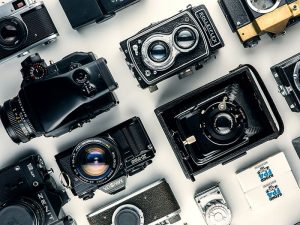A Beginner’s Guide to Buying a Camera
Yes, the photos you take on your phone are good, but maybe you’re ready to take it to the next level – which means buying a camera.
But buying a camera can be a daunting task. There are so many choices and features to consider that it’s easy for first-time buyers to feel overwhelmed. If that’s how you’re feeling then, let this beginner’s guide on the basics of buying a camera help! With these tips and tricks, you’ll be able to buy the perfect camera for your needs in no time at all!

- Type of Camera: There are two main types of digital cameras: Compact and DSLR. Digital compact cameras, or point-and-shoot models as they’re also known, can be had for less than $100 and produce high-quality images with a lot of flexibility. However, the lenses on these cameras tend to have limited zoom capabilities which makes them unsuitable if you plan on taking lots of close-up shots (or want more telephoto options). These do make great starter cameras, though.
- DSLRs contain larger sensors that offer better image quality along with manual controls such as aperture priority mode and shutter speed control. This type is suited for intermediate to advanced users who are looking for the highest quality possible.
- Price: The cost of the camera is not always indicative of its quality, but it’s still something to consider. Entry-level DSLRs can be found for under $500 with high-end models that exceed $5000. Cheaper cameras may lack certain features or have lower image resolution, which could reduce their overall value in the long term. If you have friends who have cameras, you might consider asking them for a recommendation.
- High-ISO Capabilities: Another feature you’ll want to consider is the camera’s high-ISO capabilities. High ISO settings allow more light into your photos because they increase the sensitivity of the sensor (allowing less light needed for a photo). However, this comes at an image quality cost since increasing sensors can cause noise or graininess in images which would be especially apparent if printed large. There are two main types: low and high. Low ISO starts around 100 while higher ISOs may go up to 25000+. A general rule with all cameras is that lower numbers equate to better image quality, but sometimes it isn’t always possible/practical to use them (such as indoors where lighting isn’t very consistent).
- Lens Quality: The lens is one of the most important pieces in a camera’s design but often gets overlooked by buyers. Cheaper cameras may feature less expensive lenses with smaller maximum aperture sizes, which can make them harder to use when taking photos indoors or at night (or even limit your ability to blur background elements). The only way around this is through third-party lenses designed specifically for certain brands and models that have large maximum apertures right out of the box.
- Functionality & ease-of-use: Manual settings While most modern cameras offer fully automatic modes, don’t underestimate them. Many entry-level DSLR users also use full manual mode – in fact, many professional photographers still shoot in full manual. If you’re looking for a camera that allows total control, look for the latest models with DSLR capability.
- Size & shape: Finally, don’t underestimate the importance of size when choosing your new camera. Larger cameras are great if you need lots of zoom or want to make large prints – but if portability is important, then consider something smaller and more compact instead.
- BONUS: Sensor Size & Video Capability: Sensor size refers to what sensor the camera uses in its design – larger sensors means better low light performance with less noise due to more pixels on the same area of space. These typically come in sizes like APS-C or full-frame, which will be found only on higher-end models. Video capability has become a must-have feature nowadays, so it’s worth considering if that matters to you.
If a new camera is something you’re considering, you definitely want to do your research. Start with these basics, and then reach out to some photography experts for advice.
Recent Posts








